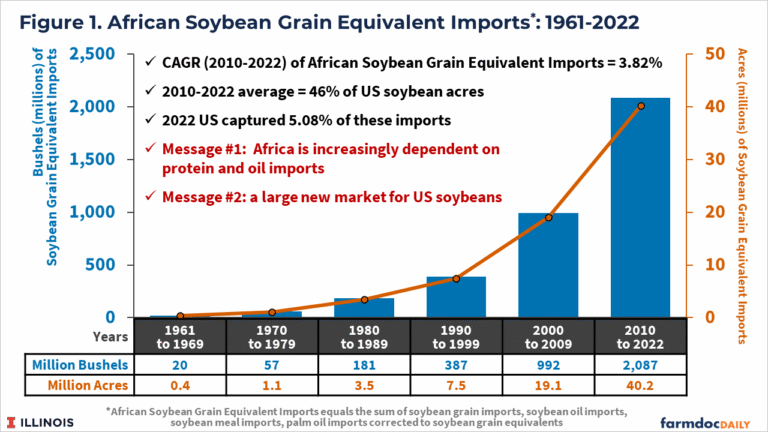By Peter Goldsmith and Guy Allen et.al
Introduction
The Soybean Innovation Lab (SIL) introduces readers to the question whether Sub Saharan Africa (SSA) presents a new market opportunity for US soybean growers. Over the next three weeks SIL and farmdoc will deliver three articles on the topic of Africa as a potential export market for US soybeans. The African market presents a very complex landscape. While it is large, diverse, and growing rapidly, there exists great uncertainty, significant business risks, and demand for soybean and associated products are just beginning to emerge.
This first article in the series focused on the larger food and oil trends dominating the African continent (see farmdoc daily from November 13, 2025). Today’s article delves into the import flows of soybean, oil, and meal into Africa. The third article will wrap up the series by outlining four specific country examples – Egypt, Ghana, Nigeria, and Tanzania – touching on their imports of soy and soy products, logistics infrastructure, and existing policies on genetically modified soybean imports. The third and final article will also include a relevant literature review on the subject of soy trade and Africa.
Soy Import Demand in SSA
Is SSA soy import demand significant, or at least potentially significant? The answer is yes. Soy product demand is potentially very significant. Using the soybean equivalent import metric, Africa imported a soybean equivalent of 2.1 billion bushels on average per year for the period 2010-2022. That equals the production of about 40 million acres, about 47% of US plantings (see Figure 1). Most of that value results from palm oil imports (64%). Soybean oil, meal, and grain imports amount to 21%, 8%, and 7%, respectively.

Source : illinois.edu